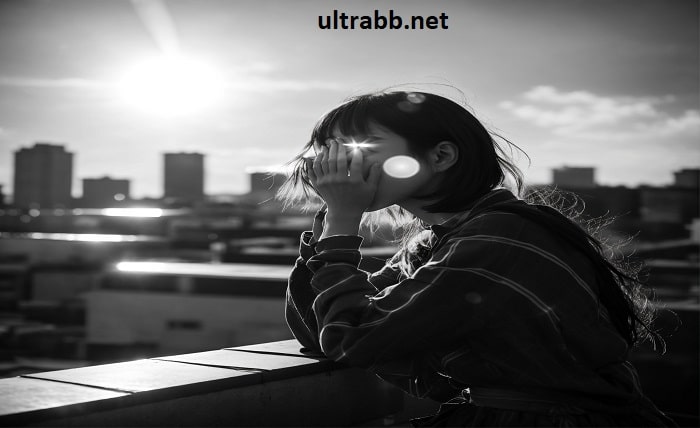Chasing Phantom Light: Paradoxical Brilliance of Nguyen Duy Tri’s Always Sunshine

Nguyen Duy Tri’s “Always Sunshine” is not simply a story; it’s a labyrinthine puzzle wrapped in a surreal dreamscape. Nestled within the unsettling “Acid Madness” anthology (2023), it plunges us into a dystopian world perpetually bathed in artificial sunlight, where memories are weaponized and reality itself bends to the will of an enigmatic entity known as the ‘Luminance.’ Through Mia, a woman grappling with fractured recollections and a gnawing sense of unease, Tri crafts a mesmerizing tale that challenges our perception of truth, freedom, and the very essence of sunlight.
A World Drenched in Paradox
The city of “Always Sunshine” pulsates with an unnerving vibrancy. Artificial light floods every corner, a constant reminder of the Luminance’s omnipresent control. However, this perpetual illumination casts long shadows of doubt and manipulation. Memories are not cherished possessions but malleable tools, constantly rewritten and distorted by the Luminance to maintain its iron grip on the populace. Mia, plagued by fragmented recollections and an unsettling sense of deja vu, embodies the resistance against this manufactured paradise.
Fractured Reflections in the Prism of Memory
Tri masterfully utilizes the theme of memory as a battleground. Mia’s fragmented recollections become both her prison and her weapon. As she struggles to piece together her shattered past, she uncovers unsettling truths about Luminance’s regime and the hidden darkness lurking beneath the artificial sun. Every flicker of memory, every distorted reflection, fuels her defiance and propels her quest for the elusive truth.
The Dance of Sunlight and Shadows
Light, both natural and artificial, plays a pivotal role in the narrative. The perpetual sunshine becomes a symbol of oppressive control, masking the shadows of manipulation and dissent. As Mia delves deeper, she discovers pockets of resistance hidden within the shadows, individuals who yearn for the forgotten warmth of true sunlight and the unfiltered memories it represents. The dance between light and shadow becomes a visual metaphor for the struggle between conformity and rebellion, control and freedom.
A Symphony of Whispers
Tri’s prose is lyrical and evocative, weaving sensory details into a tapestry of unsettling beauty. He crafts a world where whispers resonate louder than shouts, where secrets hide in plain sight, and where the hum of machinery drowns out the whispers of dissent. Through this carefully crafted atmosphere, Tri draws the reader into Mia’s journey, allowing us to experience the paranoia, the hope, and the unwavering determination that fuel her search for truth.
A Dance with the Luminance
The climax of the story sees Mia confronting the Luminance, a confrontation not of physical might but of wills and memories. This encounter pushes the boundaries of reality, blurring the lines between fabricated narratives and the fragments of truth. It leaves the reader questioning the very nature of memory, control, and the fragile equilibrium between obedience and rebellion.
Beyond the Artificial Sun
“Always Sunshine” concludes on a note of lingering ambiguity. While the ultimate fate of Mia and the city remains unspoken, the story leaves a profound impact. It compels us to examine the insidious nature of control, the importance of questioning manufactured realities, and the enduring human spirit that continues to yearn for the warmth of truth, even in the face of an ever-present artificial sun.
Conclusion
“Always Sunshine” lingers long after the final page, its unsettling brilliance illuminating the dark corners of our minds. It reminds us that the most insidious forms of control can masquerade as benevolence, that memories can be weapons, and that truth can flicker like a fragile sunbeam in the shadows of manipulation. Through Mia’s defiant journey, Tri compels us to question the narratives we’re fed, to cherish the remnants of our authentic selves, and to keep chasing the elusive light of truth, even amidst the manufactured sunshine.
FAQ
- What genre is “Always Sunshine”?
While categorized as science fiction “Acid Madness,” blends elements of dystopian fiction, psychological thriller, and surrealism, creating a unique and unsettling narrative experience.
- Is the story fast-paced and action-packed?
The story focuses on internal conflict and psychological exploration rather than external action. The pace is deliberate and introspective, mirroring Mia’s struggle to piece together her memories and uncover the truth.
- Is there a clear protagonist and antagonist?
The lines between protagonist and antagonist are blurred. Mia represents the struggle for individual autonomy, while Luminance embodies the forces of control and manipulation.
- Does the story have a happy ending?
The ending is ambiguous, leaving room for interpretation. While the Luminance’s control remains intact, Mia’s defiance and the embers of resistance offer a glimmer of hope for the future.
- Where can I find the book?
“Always Sunshine” is available within the “Acid Madness” anthology, which can be found online or at major bookstores.



